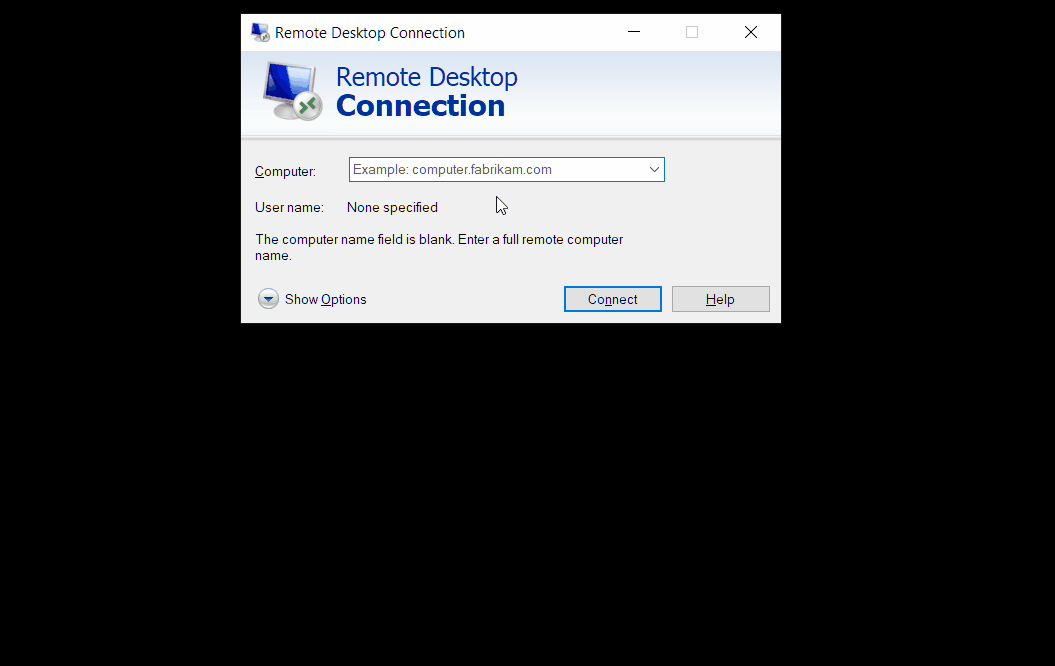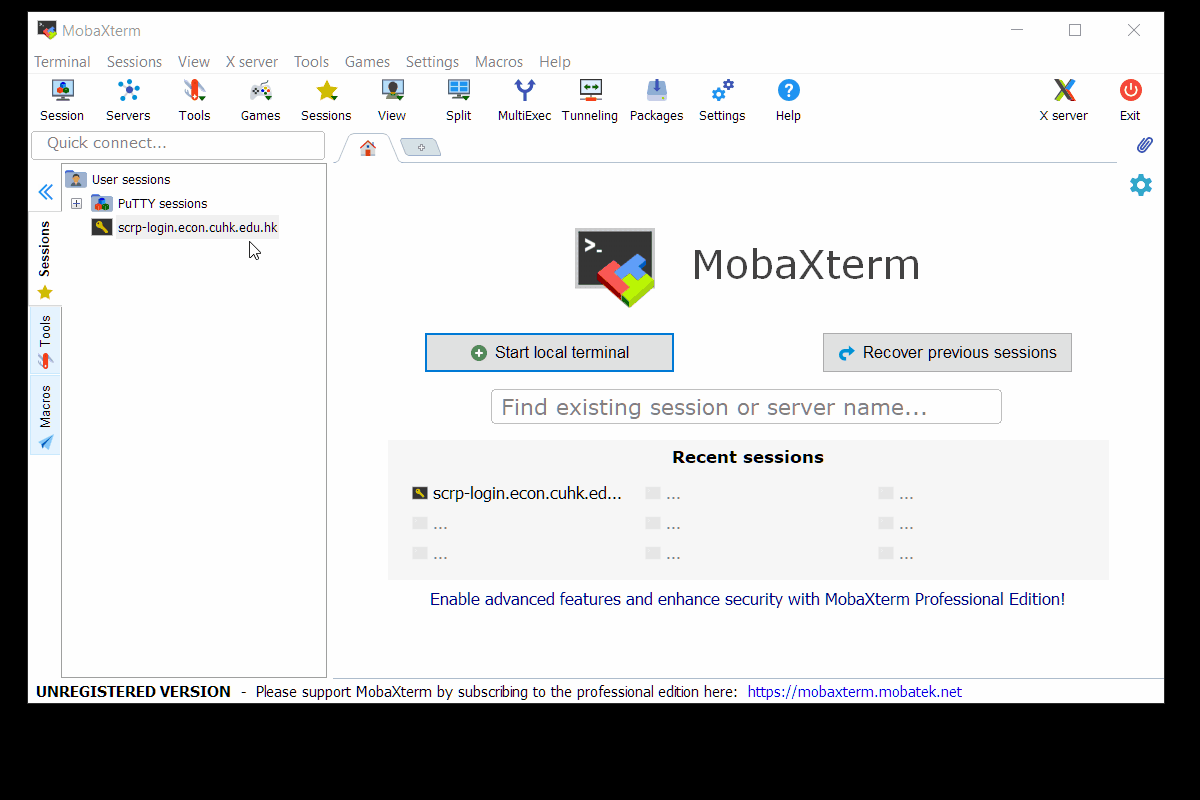Account and Access
Getting an Account
SCRP accounts are assigned to students in the Department of Economics at the beginning of each term. Faculty members can request an account by email.
You will need to set a password before you can access the cluster. You can change or reset your password here.
What Resources do I have Access to?
Generative AI
All SCRP users have access to our on-premise generative AI service SCRP-Chat.
Software
All SCRP users have access to the software installed on the cluster, including Stata, R, Python and MATLAB.
Computation
Login Nodes
Each user can use up to four CPU cores and 4GB of RAM on a login node. Since login node resources are shared by all users, actual allocation might be less than the limit.
Compute Nodes
Different tiers of users are granted different amount of resources on the compute nodes, administered through the Slurm workload manager. The resource limits are as follows:
| User Type | Logical CPUs | GPUs | Job Duration |
|---|---|---|---|
| Faculty and staff | 128 | 8 | 5/30 daysa |
| Research postgraduate student | 128 | 4 | 5/30 daysa |
| Taught postgraduate student and Senior undergraduate student |
16 | 1 | 5 days |
| Undergraduate student | 4 | 1 | 1 day |
a30 days under the more restrictive limit of 16 logical CPUs and 1 GPU.
On most compute nodes, one logical CPU represents one physical CPU core. The exception is the large memory node, where there are two logical CPUs for each physical CPU core.
These limits represent the maximum amount of resources each type of user are allowed to request. The partition a compute node belongs to can impose additional restrictions.
If the resources requested are not immediately available, the request will be put in a queue. The following priority is observed:
- The time a job has been on the queue is the main determinant.
- Faculty, staff and research postgraduate students have a two-day priority over other user types.
- A small bonus that scales inversely with usage.
Storage
SCRP has different types of storage for different purposes—there is, for example, a specific high-speed directory for large datasets. See Storage for details.
Current storage quotas are as follow:
| Location | Quota | Shared across Nodes | Backup |
|---|---|---|---|
| ~/ | 2/20/50GBc | Yes | Daily |
| ~/large-data | 20/500/1000GBd | Yes | No |
| ~/archive | 20/1000/5000GBd | Yes | No |
| /tmp | 0.3-3.7TB (shared) | No | No |
cQuotas for junior undergraduates/senior undergraduates and postgraduates/faculty and staff respectively.
dQuotas for senior undergraduates and taught postgraduates/research postgraduates/faculty and staff respectively.
Important: do not put any file you cannot afford to lose in locations that have no backup!
We advise users to put anything that is generated and too important to lose in the ~/.
For files too large to fit into ~/, you should keep your primary copy in ~/large-data and
a backup copy in /archive.
Request More Resources
Students undertaking research projects are eligible for additional resources. Please seek your supervisor’s support when you apply. Students taking certain courses offered by the Department of Economics might also be granted additional resources.
Accessing the Cluster
Methods of Access
There are three ways to access the cluster:
| Method | Advantages | Disadvantages |
|---|---|---|
| Web Access | Most convenient Works on all devices |
No GUI applications other than Jupyter, MATLAB and RStudio |
| Remote Desktop | Easiest way to use GUI applications | Memory intensive |
| SSH | Most flexible | Requires familiarity with Linux command-line interface |
Option 1: Web Access
Using Jupyter, MATLAB or RStudio requires no special software other than a browser. You can also access any applications that does not have a graphical user interface—for example, Stata in console mode—through Jupyter’s terminal.
To access the cluster through a browser, navigate to one of the following URLs:
For other software with a GUI you will either need a Secure Shell (SSH) connection or a remote desktop connection.
Option 2: Remote Desktop
Remote desktop connection is the easiest way to use applications with a graphical user interface. This is the recommended method of access if you are just beginning to use the cluster and need to use the GUI version of Stata.
Prerequisite
You need to be either physically on campus or connected to the campus network via CUHK VPN.
Windows
-
Launch the built-in ‘Remote Desktop Connection’ app.
- In Remote Desktop Connection:
- Enter either
scrp-login.econ.cuhk.edu.hkorscrp-login-2.econ.cuhk.edu.hkas the computer. - Optionally, enter your username and save your password.
- Choose an appropriate resolution under [Show Options] > [Display].
- If your monitor has high pixel density, you should select a relatively low resolution (e.g. 1600x1200) and zoom in after you have established a connection. Zooming is available under the drop-down menu at the top-left corner of the remote desktop window.
- To enable file transfer, navigate to [Local Resources] > [Local devices and resources], then:
- Uncheck the ‘Printers’ option.
- Click ‘More’ and select the drives you want.
- The drives you selected will appear under your home directory in a folder named thinclient_drives.
- Enter either
-
Click ‘Connect’.
- When prompted:
- Make sure session is ‘Xorg’.
- Enter username and password.
Click ‘OK’

Install Microsoft Remote Desktop app and follow the instructions for Windows.
The default input method is English. Follow the steps below to add another method:
- Right click on the keyboard icon on the top-right corner and select [Preferences].
- Under the [General] tab, add a new Keyboard shortcut for switching input methods by clicking the […] button. The default <Super>space does not work.
- Under the [Input Method] tab, add the input methods you want.
Alternatively, you can run the following commands in a terminal within remote desktop:
- Cantonese Pinyin:
gsettings set org.freedesktop.ibus.general.hotkey triggers \ "['<Control>space', '<Super>space']" gsettings set org.freedesktop.ibus.general preload-engines \ "['table:cantonese', 'xkb:us::eng']" - Mandarin Pinyin:
gsettings set org.freedesktop.ibus.general.hotkey triggers \ "['<Control>space', '<Super>space']" gsettings set org.freedesktop.ibus.general preload-engines \ "['sunpinyin', 'xkb:us::eng']"
You should then be able to switch to the chosen input method by pressing Ctrl-space.
Option 3: SSH
SSH provides the highest degree of flexibility. This is the recommended method of access if you intend to run computationally-intensive analysis.
Prerequisite
You need to be either physically on campus or connected to the campus network via CUHK VPN.
Windows
We recommend using MobaXterm. You can also use PuTTY, VcXsrv and WinSCP in combination as an alternative.
-
Download, install and launch MobaXterm.
-
If you intend to use MATLAB, enable hardware OpenGL acceleration in MobaXterm.
- To log in:
-
Select [Session], followed by [SSH].
-
Enter either
scrp-login.econ.cuhk.edu.hkorscrp-login-2.econ.cuhk.edu.hkas the remote host. -
You can optionally enter your username under ‘Specify username’.
Click ‘OK’ to start the session.
-
-
When prompted, follow the instructions to enter your username and password. For students, your username is your CUHK Compute ID. When entering your password, neither its length nor its content will be shown.
Use middle click to paste content instead of typing Ctrl+V.

-
Install XQuartz.
-
Launch Application > Utilities > XQuartz.
-
In XQuartz’s terminal, type:
ssh -Y username@scrp-login.econ.cuhk.edu.hkor
ssh -Y username@scrp-login-2.econ.cuhk.edu.hkFor students,
usernameis your CUHK Compute ID.
-
Open a terminal and type
ssh -Y username@scrp-login.econ.cuhk.edu.hkor
ssh -Y username@scrp-login-2.econ.cuhk.edu.hkFor students,
usernameis your CUHK Compute ID.
You can now access software installed on the cluster.
File Transfer
Option 1: Web Access
You can upload files to your home directory through the web interface of either Jupyter or RStudio. To access other directories you will need an SFTP connection.
Option 2: Remote Desktop
Prerequisite
You need to be either physically on campus or connected to the campus network via CUHK VPN.
Windows
To enable file transfer, navigate to [Local Resources] > [Local devices and resources] in the remote desktop client, then:
- Uncheck the ‘Printers’ option.
- Click ‘More’ and select the drives you want.
The drives you select will appear in the file manager under a separate device called ‘thinclient_drives’. Files inside can be copied and pasted as usual.
Option 3: SFTP
Prerequisite
You need to be either physically on campus or connected to the campus network via CUHK VPN.
Windows
You can drap and drop files to the file explorer on the left hand side of MobaXterm’s interface.
Consider WinSCP if you prefer a standalone SFTP client.
-
Download and install FileZilla.
-
Enter either
scrp-login.econ.cuhk.edu.hkorscrp-login-2.econ.cuhk.edu.hkas the host. -
Choose ‘SFTP’ as the server type.
-
After entering your username and password, click ‘Connect’.
-
Open terminal and type
sftp username@scrp-login.econ.cuhk.edu.hkor
sftp username@scrp-login-2.econ.cuhk.edu.hk -
Enter password when prompted.
Remember to check out the guide on storage to see where different types of files should go.
Using the Ubuntu Operating System
All SCRP nodes run on Ubuntu 20.04 LTS, a popular version of the Linux operating system. While you might be able to get by relying on the web interfaces of Jupyter and RStudio for simple tasks, familiarity with Linux is going to be very helpful for anything slightly more advanced. Here are some tips on how to use Linux if you are unfamiliar with it.